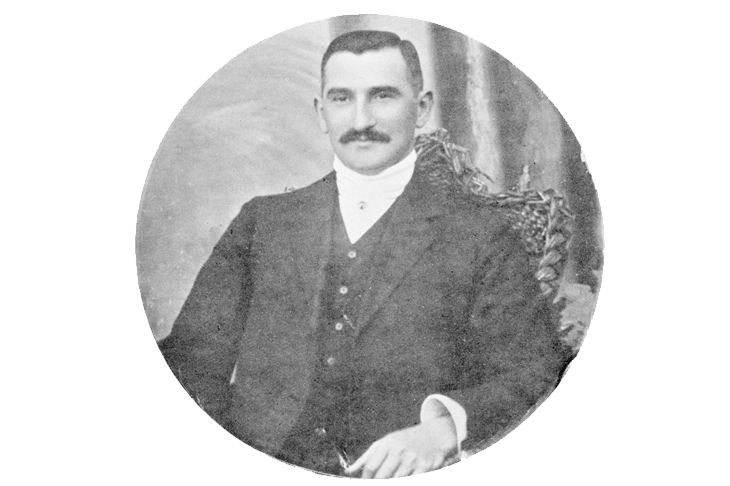One day in December 1908, a wealthy 81-year-old spinster named Marion Gilchrist was bludgeoned to death in her Glasgow flat. Miss Gilchrist, who lived alone with her maid, was an obsessive collector and hoarder of jewels, which she hid among her clothes. There was no sign of a forced entry, but a valuable diamond brooch was missing. The month before the murder she had changed her will, cutting out her relatives, whom she hated, and leaving everything to her maid.
The Glasgow police decided to arrest a foreigner named Oscar Slater. He happened to have pawned a brooch around the time of the murder. The brooch turned out to belong to Slater himself, but the police persisted in pursuing him, even though he denied having any knowledge of Miss Gilchrist.
The police knew that Slater was innocent, yet they insisted on bringing him to trial. In the High Court at Edinburgh he was convicted, chiefly on the unreliable evidence of an identity parade. Any evidence that contradicted the police case was suppressed. The crucial testimony was a statement from Gilchrist’s niece, who had told the police that her aunt’s maid had seen the murderer leaving the house and knew exactly who he was. This was not mentioned in court.
Slater did not get a fair trial. He was found guilty, and the judge, who was both biased and incompetent, condemned him to death. Forty-eight hours before he was due to be executed, his sentence was commuted to life imprisonment and hard labour. He spent 18 years in a grim prison in Peterhead, breaking up granite blocks.
Margalit Fox has chosen a cracking story and, as her account makes clear, Oscar Slater was framed. He was a German Jew, a rascal and part-time pimp, and these facts in themselves were enough to damn him in the eyes of the Glasgow police. The case became notorious as the ‘British Dreyfus’. It had all the ingredients: institutional anti-Semitism, corrupt police, a rotten judicial system and an establishment cover up.
Arthur Conan Doyle took up Slater’s cause, applying the methods of Sherlock Holmes to solve the crime. He had form in this regard, having previously exonerated George Edalji, the Anglo-Indian lawyer wrongly convicted of mutilating animals.
Conan Doyle learnt how to crack crimes as a medical student at Edinburgh University, where his teacher, Dr Joseph Bell, astonished his students with his wizardry in diagnosis. In his Sherlock Holmes stories Conan Doyle perfected these techniques; and as a real-life investigator he showed that they worked.
In 1912 he wrote a book proving Slater’s innocence. He demonstrated that the old lady was killed by someone who knew her (surprise, surprise). The killer probably let himself into the flat using duplicate keys. Though one brooch was taken, the murderer wasn’t interested in stealing jewels, but broke open a wooden box containing papers, including her will.
In spite of Conan Doyle’s intervention, the authorities refused to reopen the case. A secret inquiry in 1914 was sabotaged by the police, and the officer who pressed for it was dismissed from the force. Not until 1927, after Slater had at last been released, and after key witnesses had recanted in newspaper interviews, did the case go to appeal. Slater’s name was cleared.
But solving crimes is not just a matter of brilliant detective work. As Fox points out, the thing about the Slater case is that the police probably knew who did it all along, but they suppressed the evidence. They certainly knew that Slater wasn’t the murderer. Proving his innocence was only half the battle; the real problem was how to break the cover up.
Who was it that the police connived with Gilchrist’s family to protect? The probable culprit was Gilchrist’s step-nephew, Francis Charteris. He had a motive: his aunt had cut him out of her will. Conan Doyle certainly believed he was the murderer. But Charteris was a distinguished Edinburgh doctor and a respectable man. The one person who probably did know the killer’s identity was Gilchrist’s maid, but she took her secret to the grave.
Fox is not primarily concerned with solving the crime; she is more interested in Conan Doyle and his methods of detection. But her attempt to combine a fast-paced murder mystery with a study of Conan Doyle is sometimes strained and makes for an uneven read.
Got something to add? Join the discussion and comment below.
Get 10 issues for just $10
Subscribe to The Spectator Australia today for the next 10 magazine issues, plus full online access, for just $10.
You might disagree with half of it, but you’ll enjoy reading all of it. Try your first month for free, then just $2 a week for the remainder of your first year.














Comments
Don't miss out
Join the conversation with other Spectator Australia readers. Subscribe to leave a comment.
SUBSCRIBEAlready a subscriber? Log in